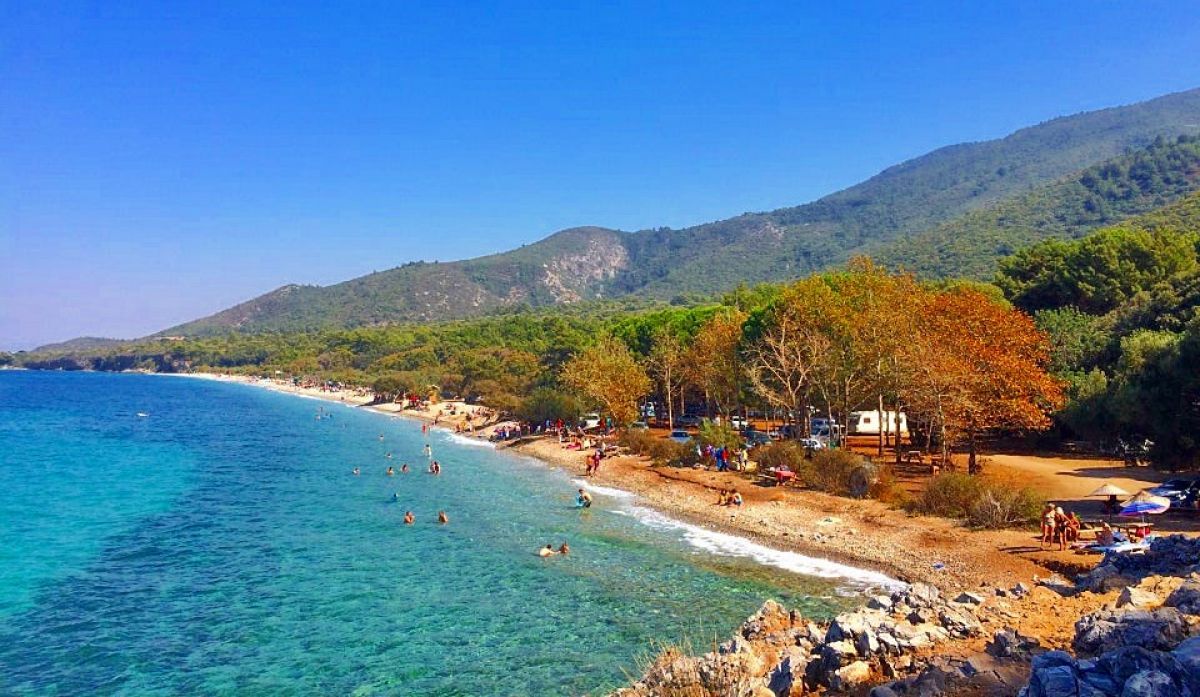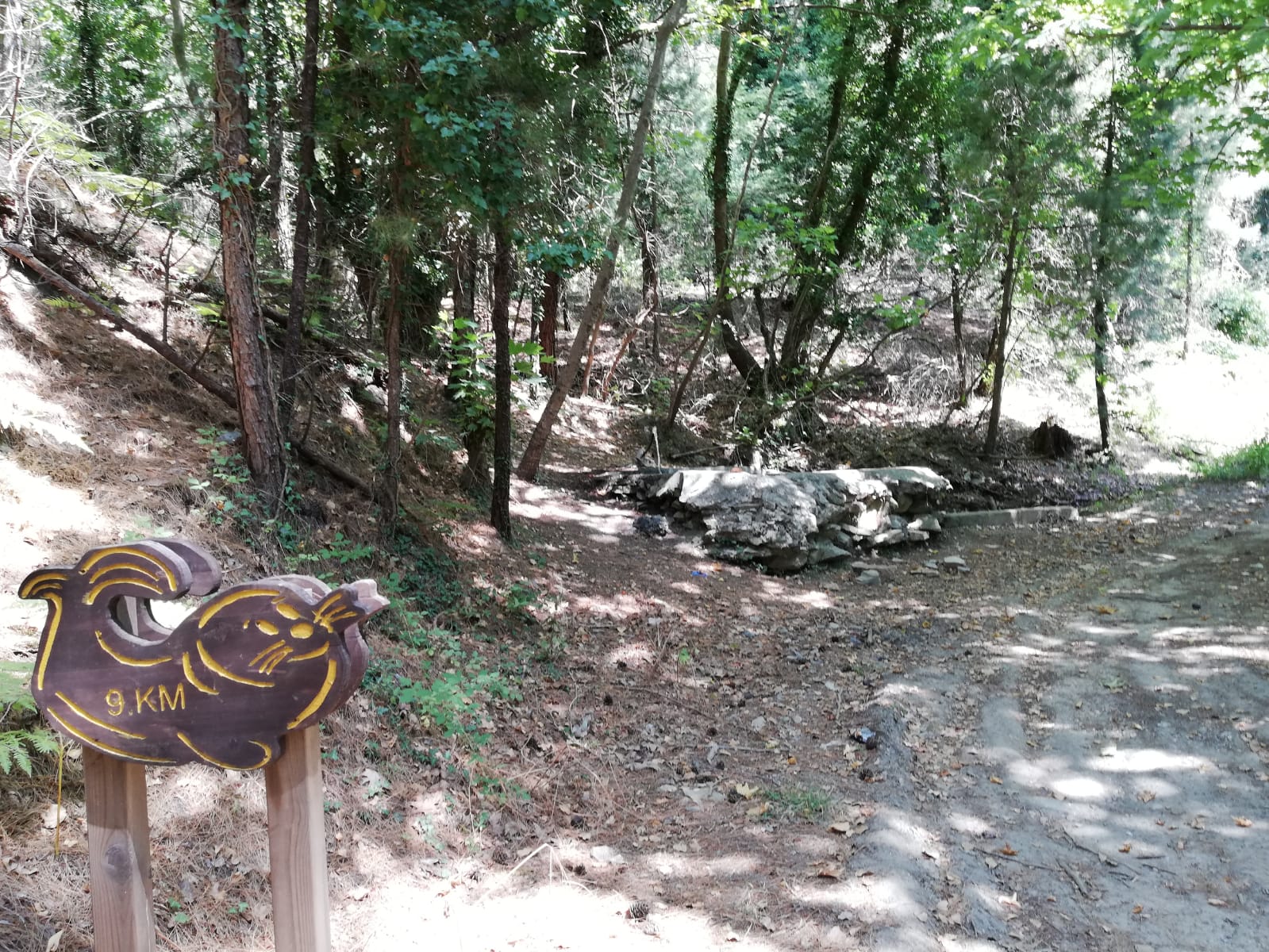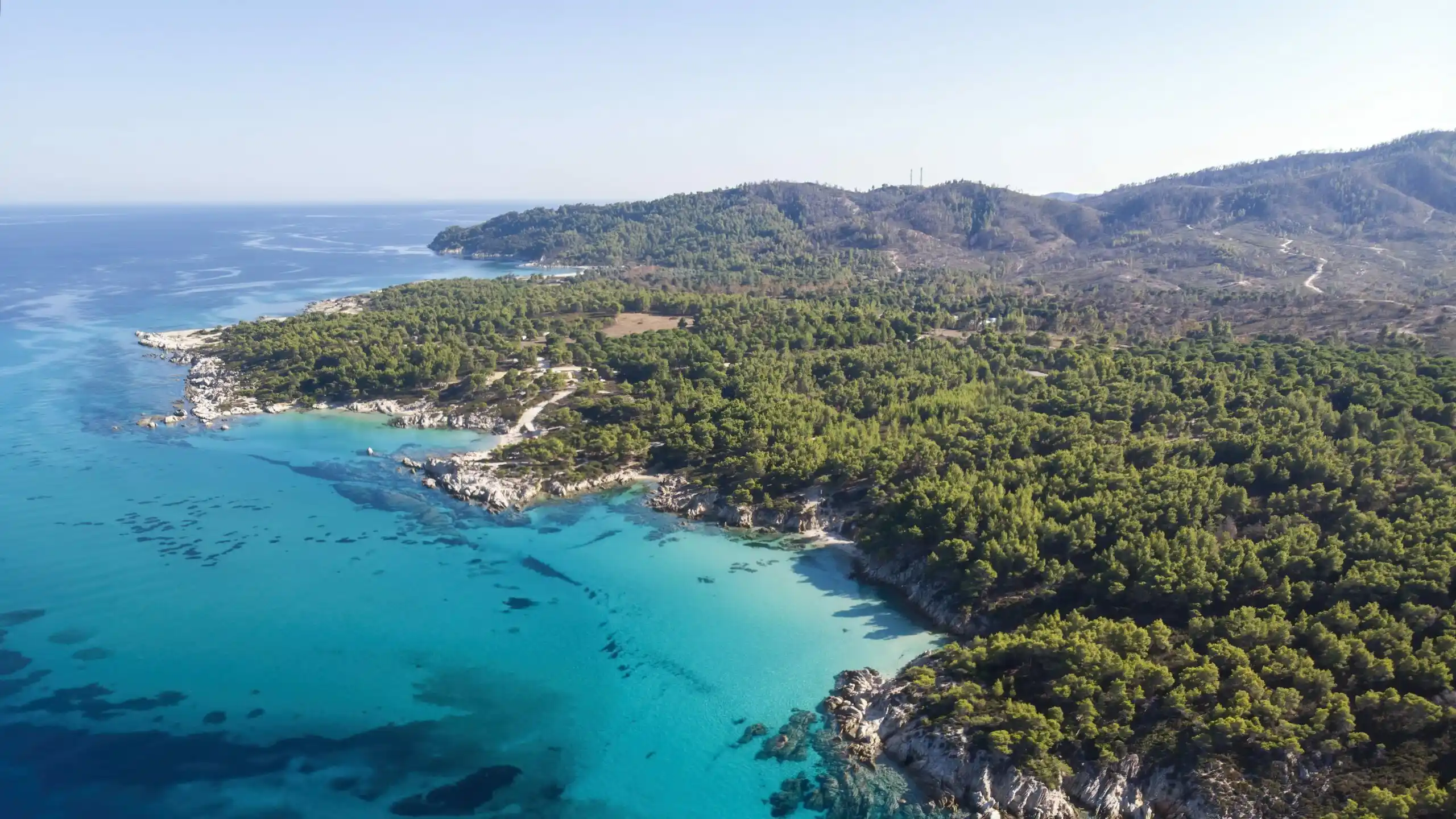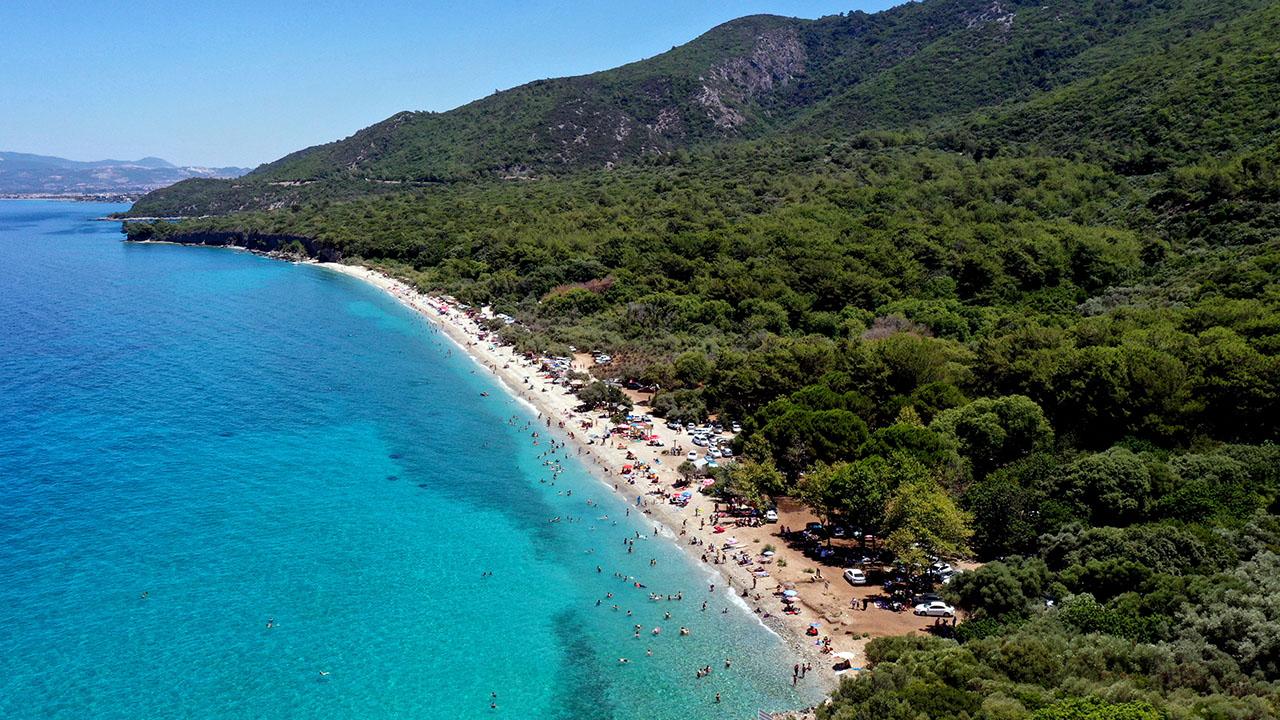Are you tired of the crowded beaches everyone knows in the Aegean, the constant battle for a sunbed? If you're looking to swim in turquoise waters while also losing yourself in untouched nature, filling your lungs with the scent of pine, then I have a wonderful secret for you: set your course for the Dilek Peninsula National Park, just south of Kuşadası. This isn't just a place to swim; it's a living botanical garden that hosts plant life from the Mediterranean all the way to the Caucasus, and it's an international treasure recognized by the Council of Europe as a Flora Biogenetic Reserve Area. In this article, we'll unveil the top activities for your list ofthings to do in Dilek Peninsula National Park and share the secrets of its famous coves. If you're ready, let's set off for one of the most special corners of the Aegean!
Swim in the aquarium-like clear waters of İçmeler or Aydınlık Cove
From the moment you step through the gates of the National Park, a magical journey begins. The most delightful stops on this journey are undoubtedly the four famous coves lined up one after another: İçmeler, Aydınlık, Kavaklıburun, and Karasu. Each has a different character, each promising a unique experience. The important thing is to know what you're looking for.
If you're with children or prefer a beach that deepens gradually, your first stop should be İçmeler Cove without a second thought. Located just 300 meters from the park entrance, this cove boasts the distinction of being the only sandy beach in the national park. The water is so shallow that you can walk for tens of meters and it will barely reach your waist, making it a favorite for families. It's also well-equipped with facilities; you'll find everything you need, such as restrooms, showers, changing cabins, and picnic tables. Be warned, however, that its popularity means it can get a bit crowded, especially on weekends.
If, on the other hand, you think shallow waters aren't for me, I need to dive into cool depths, then head 5 kilometers further to Aydınlık Cove. Unlike İçmeler, this cove has a pebbly shore, and the sea gets deep within just a few steps. This makes it a haven for good swimmers and those looking to escape the crowds. Enjoying the sea in a calmer, more peaceful atmosphere under the shade of the surrounding pine trees is priceless. If you have the time and energy, consider going all the way to Karasu Cove at the end of the road; it's the closest point to the Greek island of Samos, and the view is truly breathtaking. If you're curious about other options around Kuşadası, be sure to check out our guide to the most beautiful beaches in Kuşadası.

Discover the park's flora with a nature hike through the canyon
If you think the sea and sun are all the National Park has to offer, you're mistaken. Now it's time to trade your swimsuit for hiking shoes and step onto one of the richest nature trails in the Aegean. The 15-kilometer Olukdere Canyon hiking trail that runs through the park is waiting to show you a completely different side of the National Park.
This hike, which takes about 4-5 hours, is incredibly enjoyable, especially in the spring and autumn months. As you ascend, the landscape unfolds around you like a painting. On one side, you're greeted by the unique wetlands of the Büyük Menderes Delta, and on the other, a panoramic view of Bafa Lake and the majestic Beşparmak Mountains. But it's not just the view that makes this hike special. You're actually walking through an open-air botanical museum. The park is home to 804 different plant species, 6 of which grow nowhere else in the world! Along your walk, you'll be accompanied by laurel, Judas trees, strawberry trees (arbutus), carob, and fragrant wild olive trees. One moment you're walking through a typical Mediterranean maquis shrubland, and the next you find yourself surrounded by plants native to the Black Sea forests. This is a rare journey that offers you the chance to experience almost the entire flora of Anatolia in just a few hours.

Observe the wild boars and horses roaming freely in the park
One of the things that makes the Dilek Peninsula so special is its rich wildlife. As you explore the park, remember that you are just a guest here; the true hosts are the animals roaming freely around you. Respecting them is the most important part of this unique experience.
The most famous residents of the park are undoubtedly the wild boars. You can often encounter them searching for food with their young, especially around picnic areas and coves. Over the years, they have become so accustomed to people that they don't hesitate to come right up to you. They may look cute, but remember, they are still wild animals. Feeding them is very harmful both for your safety and for the natural balance of their lives. Please do not make this mistake. Simply enjoy observing them from a distance in their natural habitat. Remember, this is their home; we are the guests.
The park also has residents with a mysterious and poignant story: the Feral Horses (Yılkı Atları). The story of these horses dates back about a century to the animals left behind by the Greeks who left the region during the population exchange. Over time, they became wild and have continued their lineage in these lands, becoming a symbol of freedom. They are usually a rare sight as they live in the more remote, rugged parts of the park that are closed to visitors. However, some lucky visitors have witnessed the magical moments when they come down to the sea to cool off, especially in very hot weather. Protected areas like the Dilek Peninsula truly hold a special place among the natural wonders in the Aegean.

Don't End Your National Park Adventure: Beauties Nearby
If you're wondering where else can I see now that I'm here? after visiting the Dilek Peninsula, you have some fantastic options. Your first stop after leaving the park should definitely be the Zeus Cave, located right next to the entrance. The spring water inside this cave, which is the subject of mythological stories, is ice-cold even in the middle of summer, and entry is completely free.
If you're interested in history, you can visit the nearby Panionion Ancient City, the sacred meeting place of the 12 Ionian cities. Additionally, Eski Doğanbey Village, which will take you on a journey back in time with its stone houses and authentic texture, is another must-see. If you have more time, you can hop in your car for a half-hour drive and lose yourself in the magic of the world heritage site Ephesus Ancient City or the charming village of Şirince, famous for its wines and quaint streets.
Frequently Asked Questions (FAQ)
Question: How much is the entrance fee for Dilek Peninsula National Park in 2024? Answer: The current fees for 2024 are as follows: 35 TL per person for pedestrians, 70 TL for motorcycles, and 105 TL for cars. If your vehicle has an HGS tag, you can pass through the toll booths automatically.
Question: What are the visiting hours for the National Park? Answer: The park generally opens to visitors at 08:30 in the morning during the summer season and closes around 19:00 - 19:30 in the evening. However, these hours may vary depending on the season and public holidays, so it's a good idea to confirm before you go.
Question: Is it possible to camp or stay overnight in Dilek Peninsula National Park? Answer: No, camping, lighting fires, and staying overnight within the National Park boundaries are strictly prohibited. The park is only open for day visits, and this rule is crucial for protecting nature.
Bibliography: For more detailed and up-to-date official information, you can visit the official website of the Republic of Turkey Ministry of Agriculture and Forestry, General Directorate of Nature Conservation and National Parks.


 English
English Türkçe
Türkçe